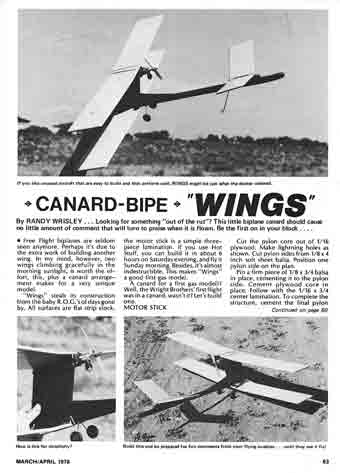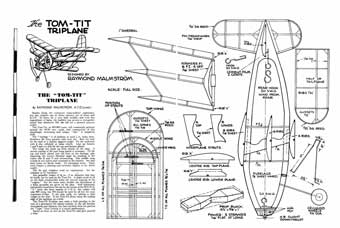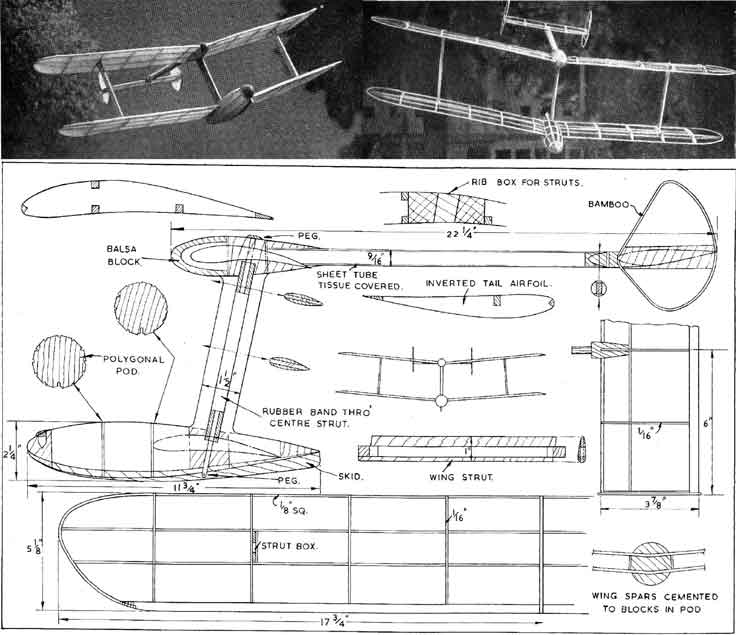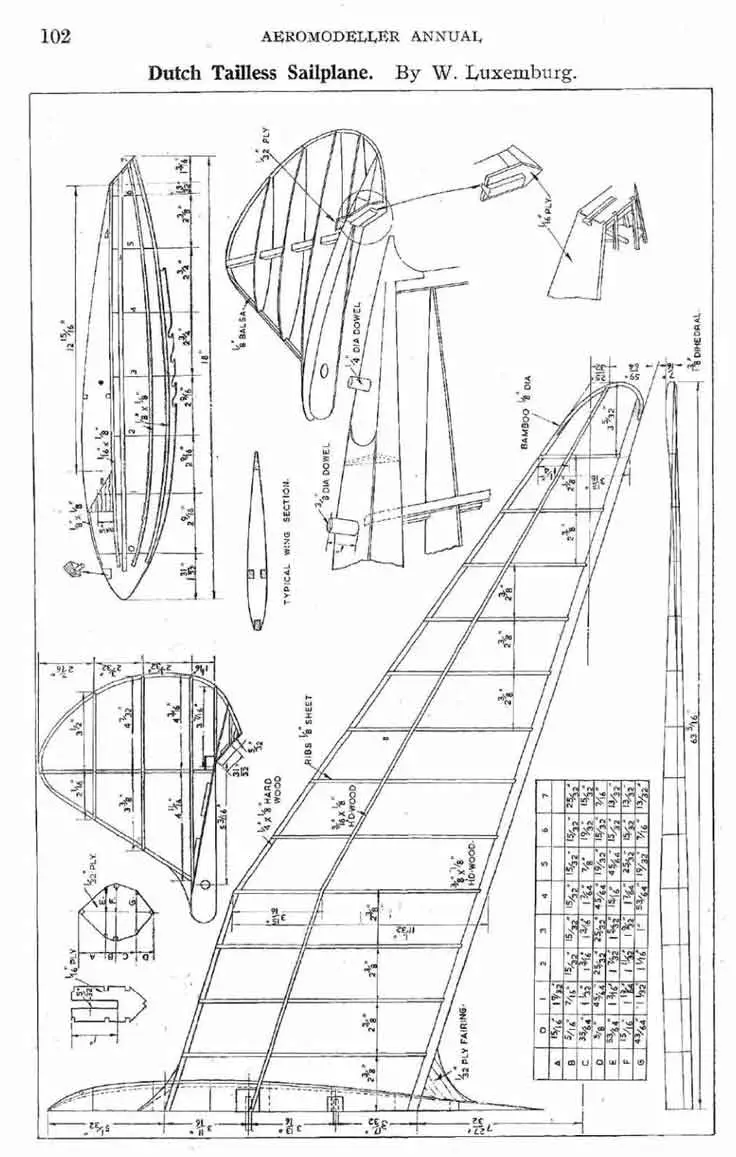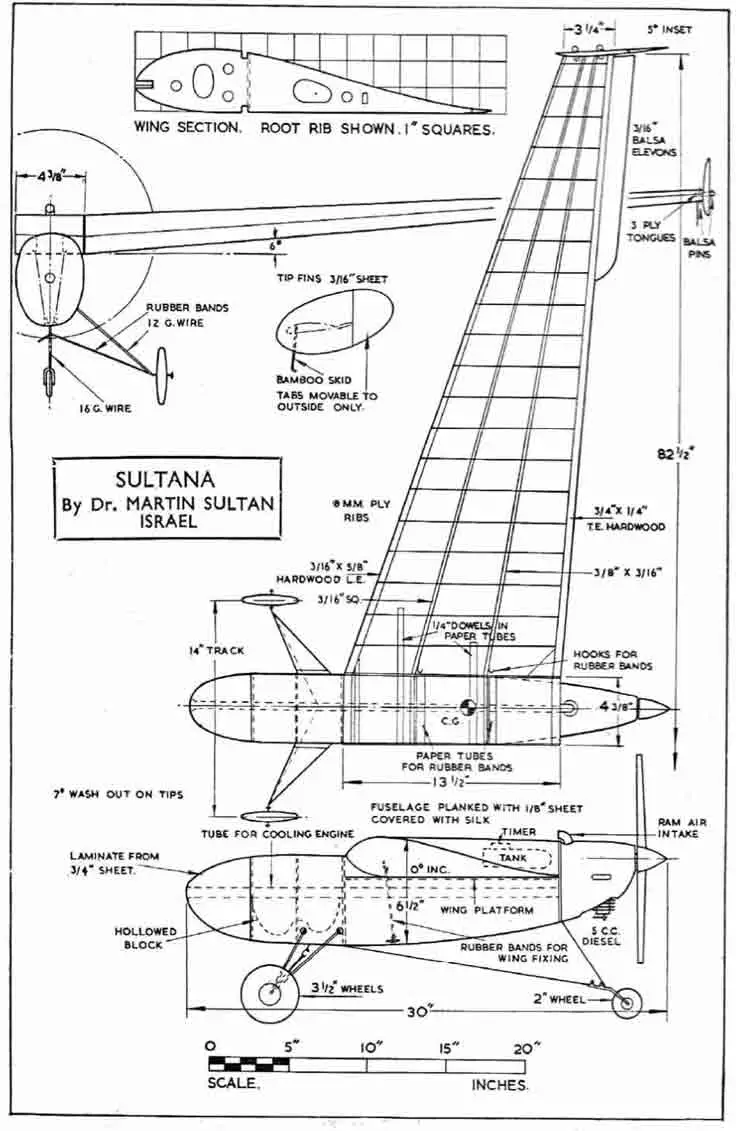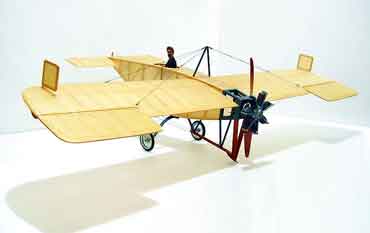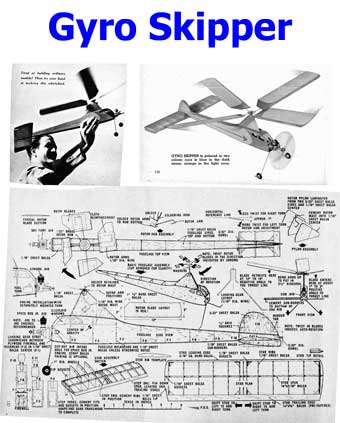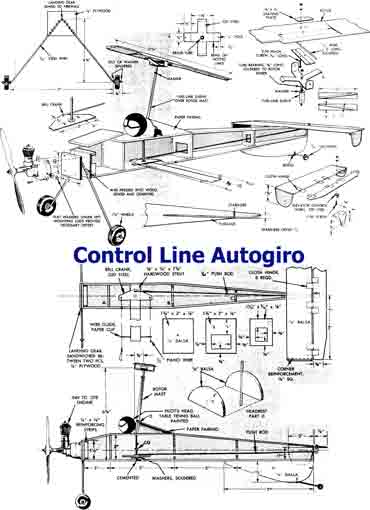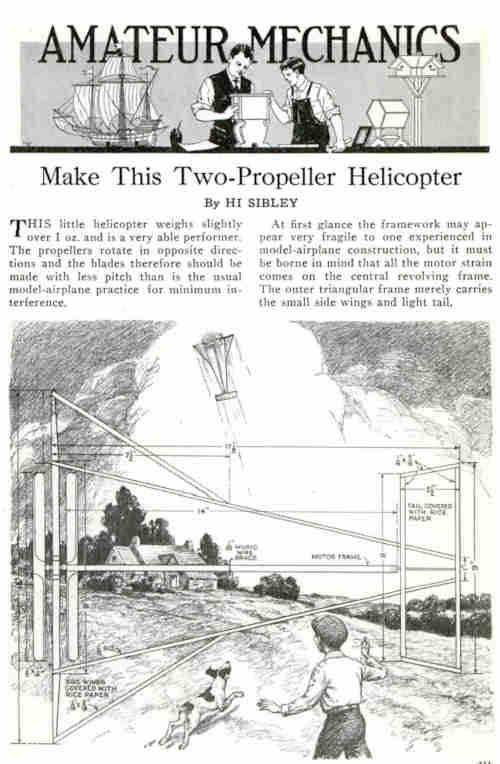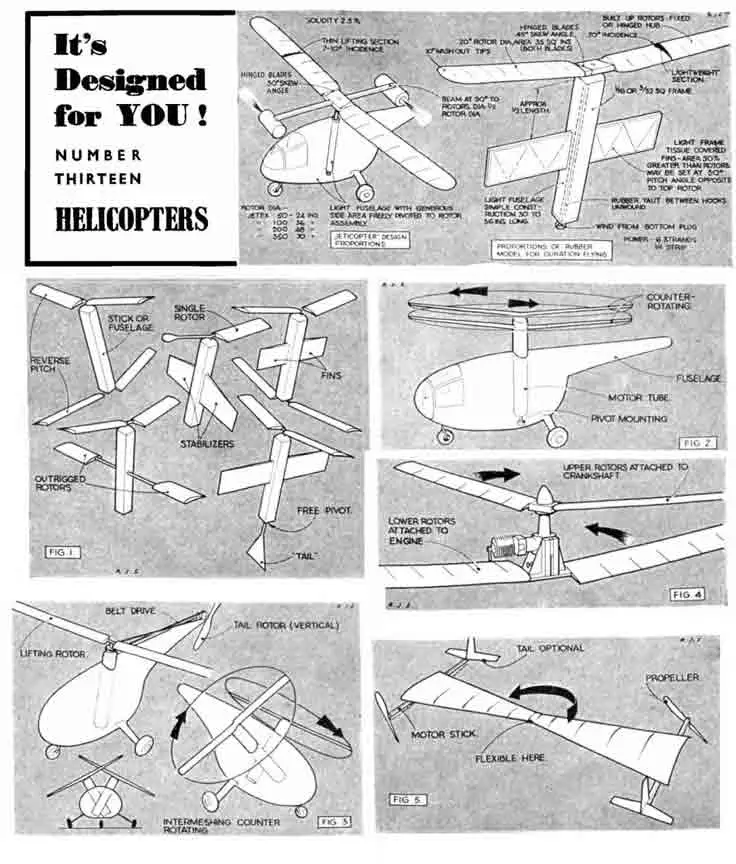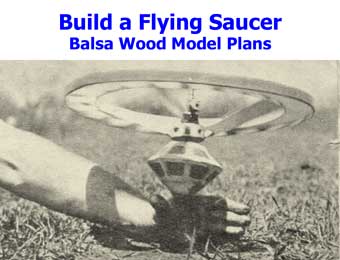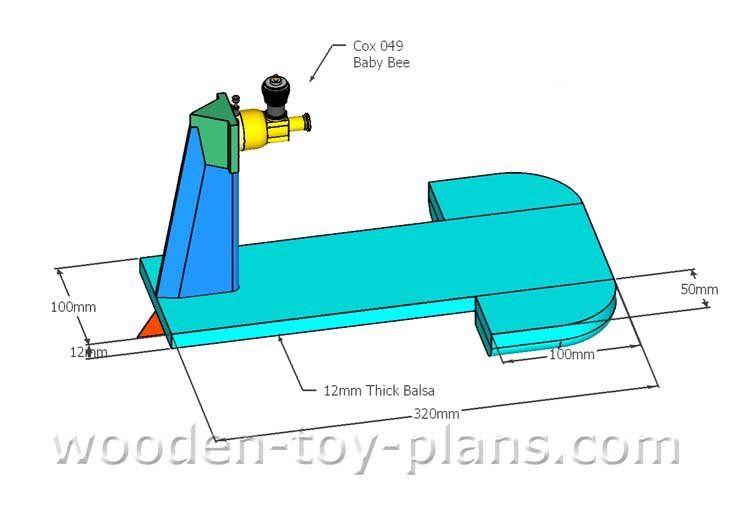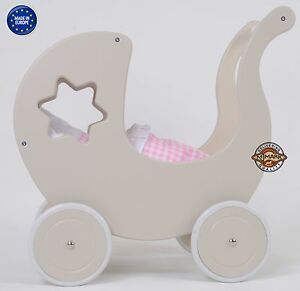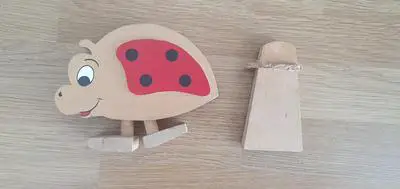Model Airplane Plans
How to build things that fly with these model airplane plans. Ever since I was young, much younger than I am today, I have been interested in unusual flying objects.
Trying to decide what to include on this page was quite easy. I did not want to compete with the hundreds of free model aircraft plan sites that I have come across in my research. Instead I wanted something unusual, interesting, different.
They could be free flight, RC, control line, rubber powered, Jetex or gliders. You could build them as they are, or use the existing design as an inspiration for one of your own.
For example, take a free flight model airplane design and convert it to RC.
Biplane Model Airplane Plans
A free flight canard biplane model airplane plan designed and built by R Wrisely. 25 inch wingspan, 200 square inches wing area, powered by a Cox 020 Pee Wee.
There are a few modifications I would make to this design.
First, use the good old Clark Y airfoil section for the wings. Maybe scale it up for electric radio control. Change the shape to something more round.
If two wings is good, three wings must be even better, yes? Just one of the many model airplanes designed by Ray Malmstrom.
Read the blog by Thayer Syme on how he built the Tom Tit Triplane
Peres III Pod and Boom Biplane Glider
To quote the article from Aeromodeller Annual:
This design from the Tel Aviv Experimental Center for Areomodelling and Low Speed Aerodynamics, inspired by ING F. Piatelli.
Looks like playing with model airplanes was a serious business back then.
The original built from hardwood and hardwood veneer. I’m sure it can be built with balsa wood.
An unusual feature is the anti lift tail plane, an inverted aerofoil section. Apparently it was something favoured by the Italians, used in many of their flying boat designs.
No tow hook position is shown, but according to the article, it should be about 3 inches back from the nose of the pod.
If I was to make one, as an experimental prototype, there are a few things I would change. First, change the construction of the wings with a few more ribs and a more substantial leading edge.
Also, vertical grain webbing between the spars for the first third of the wingspan. For the pod and boom, I would more than likely use soft balsa sheet instead of the polygonal pod as shown.
It would be an experimental prototype, after all, and I would hate to see all my hard work come crashing into the ground on the maiden flight.
Dimensions in inches:
Span 39 ½
Length 27 ¾
Main plane Chord 5 1/8
Tail Plane Span 12
Tail plane Chord 4
Download the plans here: Peres III Biplane Pod and Boom Glider by Ing F. Piatelli
Tailless Model Airplane Plans
Dutch Tailless Glider
Another vintage toy airplane plan from the 1948 edition of Aeromodeller Annual. This is the Dutch tailless glider by W. Luxemburg.
It is only a sketch with not much by way of construction detail. Dihedral appears to be 1 3/8 inches at the wingtips, with a 7/16 inch washout.
It also features an unusual method of fixing the rudder, which I imagine would make it detachable, why I'm not sure.
I could use it as inspiration for my own design one day.
Download the Dutch Tailless Glider by W. Luxemburg.
The Sultana Tailless Model Airplane
Download the Sultana Powered Tailless Pusher Model Airplane designed and built by Dr. Martin Sultan.
Featured in the 1952 Aeromodeller Annual, it is a free flight design which I think can easily be adapted to Radio Control.
With a wingspan of 82 1/2 inches the original was powered by a 5 cc Bonnier diesel (similar to a Micron) with a four blade propeller.
Purely out of curiosity, I searched for the term Bonnier diesel, and found Adrian's Model Aero Engines.
Carnard Model Airplane Plans
The Bleriot Canard XXV
Free plans for an electric powered RC scale model with a 1 meter wingspan, of the Famous Louis Bleriot Canard XXV. Read more about two of the flying scale models you can download.
Autogiro Model Aircraft Plans
Free Flight Autogiro
This is a free flight balsa model airplane plan for an autogiro powered by an 049 engine.
Simply for the joy of building something that flies. If I was to make one today, I would use a brushless electric motor with radio control.
Apparently an 049 engine has the power output of 80-100 watts, so that is what I would use.
Control Line Autogiro
Download the control line autogiro model plans for 1/2 A engines.
Toy Helicopter Design
Here is the kind of model airplane I would have made when I was younger. Rubber powered and made using balsa wood.
From an article on page 311 Popular Mechanics February 1930.
How to design your own toy helicopter. I have made a PDF copy of the article from Aeromodeller magazine.
Flying Saucers
Download the Dutch flying saucer PDF article including the plans.
Designed by Paul DelGatto, from the Handbook of Model Planes, Cars and Boats 1965.
Powered by the popular Cox 049 or 020 engine.
Download the article and plans to build this balsa model flying saucer.
Air Boats
I made this air powered hydroplane model many years ago.
Very simple construction using a half a sheet of 12mm balsa, which means you could make two.
It was powered by my favourite Cox 049 Baby Bee.
I have made a 3D model using Sketchup.
The free printable PDF download includes a plan view with basic dimensions.
It should have been a tethered model, I suppose, but at the time I had no idea about this sort of thing. It was an experiment. I ran it on the Olympic size swimming pool at school. I managed to convince one of my co-conspirators to catch it at the other end.
Quite a feat of bravery if you consider this small object making the noise of a thousand angry bees coming at you at a million miles an hour. Not to mention an unguarded 6x4 propeller spinning at about 10 000RPM quite able to do some serious damage. I still have the scars to prove it.
One more thing, seeing that you have read this far. One of the teachers did mention the (very) thin but easily dissipated film of oil left on the surface of the pool. Ah, the joys of growing up in the 70's.
How to turn your hobby into a profitable business.
Solo Build It! (SBI!) is an online platform that empowers solopreneurs to build profitable online businesses. For over two decades, SBI! has been trusted by members to turn their passions, hobbies, or skills into successful ventures. Recently, the introduction of ChatGPT has ushered in a new era of AI-assisted content creation within SBI!.
Allow me to introduce you to Tai, your business-building AI assistant. Tai is now available in SBI! and can help you navigate the world of online entrepreneurship. Whether you’re a complete beginner or an experienced solopreneur, SBI! provides everything you need to create an income-generating website or blog.
Here are some reasons why starting an online business with SBI! and Tai is a great choice:
- Adaptable Lifestyle: Building an online business adapts to your desired lifestyle. Enjoy newfound freedom without being tied down to another job.
- Low Startup Costs: You don’t need significant capital to begin. All you require is a computer, internet access, a roadmap, and an affordable platform like SBI!.
- Flexibility: Work as much or as little as you want, wherever you choose. Once you’ve built a solid foundation, you can earn money even on days you don’t actively work.
- Portability: Take your business with you, especially if travel is part of your retirement dream.
- Global Impact: Help people worldwide by sharing your knowledge and expertise.
- Continuous Learning: Running an online business keeps your mind active and energized.
SBI! combines education, tools, and a proven process to give you the highest chance of achieving your financial goals. Whether you’re aiming for financial independence or simply want a rewarding project during retirement, SBI! can guide you.
If any of this resonates with you, I invite you to explore SBI! and discover how it can help you build your online retirement business. Even if you’re a beginner, SBI! provides the resources you need to succeed. Say hello to Tai and embark on your entrepreneurial journey! 🚀
Learn more and try Tai for free on the Solo Build It! website.
